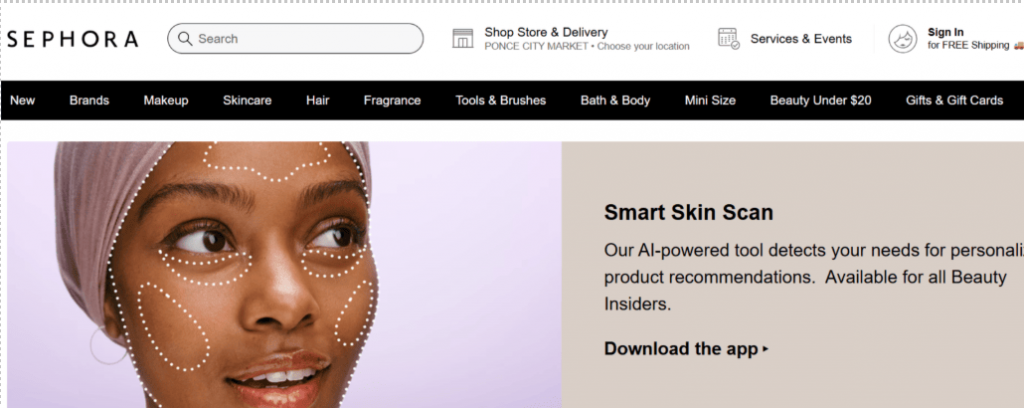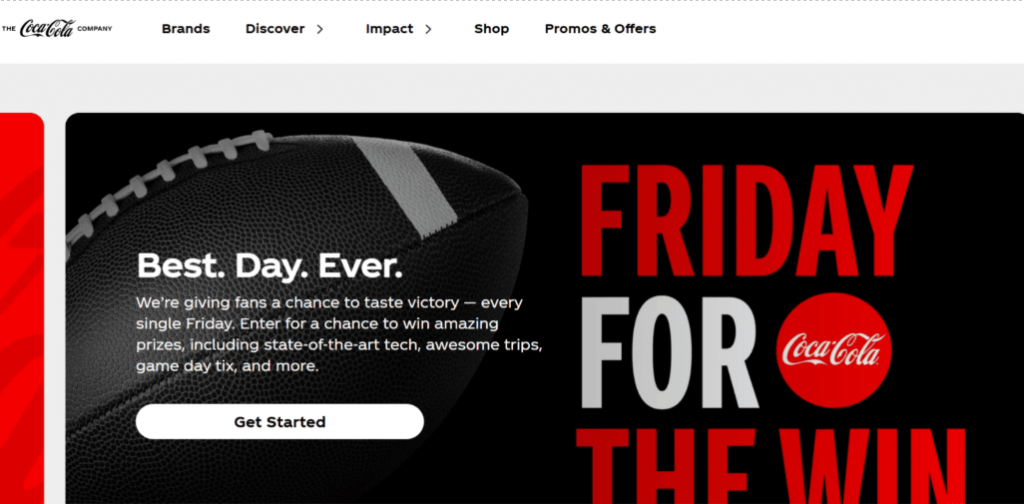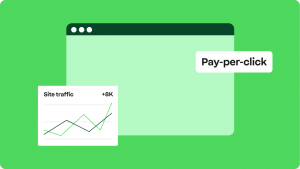Key takeaways:
- AI is revolutionizing how businesses approach marketing.
- From automation to personalization, AI offers both efficiency and creativity.
- Success lies in selecting the right tools, aligning them with goals, and scaling responsibly.
AI is transforming marketing. Today, 94% of organizations worldwide use artificial intelligence (AI) to plan or execute marketing strategies. Marketers who embrace it now gain a competitive edge, while those who wait risk falling behind.
AI is no longer a futuristic concept. It’s a practical tool that helps automate campaigns, create compelling content, and understand customers on a whole new level.
In this guide, you’ll learn how to leverage AI to streamline operations, personalize campaigns, and improve ROI. We’ll also cover the key technologies driving change, the benefits and challenges to expect, and best practices to make AI a powerful ally and not just another trendy tool.

What is AI in marketing?
At its core, AI in marketing refers to the use of artificial intelligence to enable smarter decision-making, faster execution, and personalized customer experiences.
Some of the main AI technologies marketers rely on include:
- Machine learning (ML). The engine of AI, ML algorithms learn from data to identify patterns and make predictions.
- Natural language processing (NLP). This allows computers to understand, interpret, and generate human language. It’s what makes chatbots and voice assistants so effective.
- Predictive analytics. Using past data, predictive analytics give you a sneak peek into what your customers are likely to do next. This helps you figure out who your best potential customers are and how to keep them from walking away.
- Automation tools. AI takes traditional automation and puts it on a whole new level. It makes your marketing campaigns smarter and more dynamic. This way, small business owners can easily adapt to customer needs in real time with minimal effort.
8 ways to harness the power of AI in your marketing
You might think that AI is just one tool, but it’s not. It’s a whole suite of powerful technologies. Here’s how you can use them strategically to get ahead:
- Smart lead scoring
- Dynamic pricing with AI
- AI-powered email marketing
- Segmentation-based marketing
- Content generation and SEO
- Multi-language marketing campaigns
- AI-powered automation
- Data analysis and insights
Smart lead scoring
Predictive lead scoring uses AI to rank potential customers based on how likely they are to buy. It looks at past data, behavior, and customer info to spot patterns that show strong interest.
Forget traditional lead scoring—the kind where you had to set all the rules yourself. AI models are smarter because they learn from your successes and failures, spotting patterns that show a customer is really serious about buying. It’s like having a mind-reading assistant that tells you who to talk to next. For example, the model can consider how often a lead engages with emails, visits product pages, or interacts on social media.
This helps sales teams focus on the most promising opportunities, improve conversion rates, and reduce wasted effort on low-quality leads. It also makes marketing more efficient and aligns sales and marketing for better results.
Dynamic pricing with AI
Using dynamic pricing with the help of AI is a total game-changer for marketers. We get it—pricing is tough, and it’s always changing. As a plumber, how do you know what to charge for that emergency call on a rainy Saturday night? As a hairdresser, how do you set a price for a new style that’s suddenly trending? AI takes the guesswork out of it.
This is where AI comes in. Think of AI as an incredibly smart assistant that watches everything happening in the market 24/7. It looks at things like:
- What your competitors are charging
- How many people are looking for a service like yours
- What time of year it is
- What people are willing to pay
Based on all this information, AI can instantly figure out the best price for your service or product.
How it works
Instead of setting one price and sticking with it forever, AI helps you change your prices to match what’s happening right now. For example:
- An online store might see that a customer keeps looking at a product but hasn’t bought it yet. AI can automatically offer them a small discount to encourage them to buy.
- An airline knows that seats on a flight are filling up fast. AI can raise the price of the last few seats to make sure the airline gets the most money possible.
- A ride-sharing app like Uber or Lyft uses AI to raise prices during a busy time, like rush hour or when it’s raining, because more people need a ride.
By using AI, you can make sure your prices are always the best they can be—not too high that you lose customers, and not too low that you lose money. It helps you stay competitive, respond quickly to what’s happening in your market, and increase your profits, all without you having to do the math.
AI-powered email marketing
AI puts an end to those one-size-fits-all email blasts. Instead, it gets to know each of your customers personally regarding what they browse, what they buy, and what they click on. Then, it uses that data to deliver emails that feel like they were written just for them.
The best part? AI handles all the busy work. It figures out the perfect time to send an email to get a customer to open it and even writes killer subject lines. It also ensures those timely reminders, like a nudge to finish a purchase—are sent automatically, so you can focus on running your business. Over time, it learns what works best, reducing your guesswork and boosting your results.
Here are some AI-powered tools that help in email marketing:
- HubSpot. Uses AI for smart segmentation, predictive lead scoring, and automated workflows to send the right emails at the right time.
- Mailchimp. Offers AI-driven send-time optimization, subject line suggestions, and predictive analytics for customer engagement.
- ActiveCampaign. Uses machine learning to trigger personalized email sequences and improve customer lifecycle automation.
- Seventh Sense. Specializes in send-time optimization by analyzing when each individual subscriber is most likely to engage.
- Persado. Leverages natural language generation (NLG) to craft emotionally resonant subject lines and body copy that improve open rates.
- Salesforce Einstein. Integrates with Marketing Cloud to deliver AI-powered personalization, predictive engagement scoring, and automated campaign optimization.
- Drift Email. Focuses on real-time personalization and AI-powered lead follow-ups, ensuring no opportunity is missed.
These AI-powered email marketing tools not just help automate but also make emails feel personal and relevant while saving marketers time and effort.

Segmentation-based advertising
AI takes the guesswork out of advertising. It uses smart technology to ensure your ads are seen by the right people at the right time. Instead of relying on general demographics, AI analyzes everything from browsing history to social interactions to create highly targeted audiences.
This powerful tool continuously learns from user engagement, helping you focus on the most promising leads. When it comes to optimization, AI automatically adjusts your ad bids in real time, so you spend your budget efficiently. It also tests different versions of your ads to identify which creative—from headlines to images—delivers the best results.
Here are some widely used AI-driven tools for ad targeting and optimization, along with their strengths:
- Google Ads (Smart bidding and Performance Max). Uses AI to automatically adjust bids, optimize targeting, and personalize ad delivery based on user intent and predicted conversions.
- Meta Ads (Facebook and Instagram). Leverages machine learning to create lookalike audiences, optimize creative placement, and deliver personalized ads based on user behavior and demographics.
- LinkedIn Ads. AI helps match ads to professional attributes (job title, skills, industry) and optimize campaigns for lead generation.
- Amazon Advertising. Uses AI to recommend products, run sponsored ads, and optimize bids based on shopper intent and historical purchase behavior.
- The Trade Desk. A leading programmatic ad platform that uses AI for cross-channel targeting and real-time bidding optimization.
- Adobe Advertising Cloud. AI-driven demand-side platform (DSP) that helps with predictive targeting and automated ad placement across channels.
- Criteo. Specializes in retargeting and dynamic product ads powered by AI, showing shoppers items they’re most likely to buy.
- Quantcast. Uses AI to predict consumer intent and optimize campaigns for brand awareness and performance marketing.
These tools show how AI takes the guesswork out of ad targeting by constantly learning from engagement and conversion data.
Content generation and Search Engine Optimization (SEO)
AI is changing the game for content creation and SEO, making both smarter and more effective. By combining automation and data analysis, AI tools help you produce high-quality, optimized content much faster.
Think of it as a helpful assistant that writes blog posts, product descriptions, or ad copy. It can also suggest headlines, check for readability, and tailor the tone to your specific audience. More advanced platforms can even create personalized content at scale, like custom landing pages or email copy for different customer groups, ensuring your message always hits home.
Importantly, AI doesn’t replace creativity; it acts as a co-pilot. This helps writers brainstorm ideas, save time, and focus on storytelling.

For SEO, AI helps optimize content for search engines and user intent. It analyzes search trends, competitor content, and keyword performance to recommend topics, semantically related keywords, and content structures most likely to rank.
Tools powered by machine learning can predict how changes in titles, headings, or meta descriptions will affect rankings.
AI also assists in on-page SEO (like optimizing keyword density, internal links, and readability) and off-page SEO (by identifying backlink opportunities).
In short, AI transforms SEO and content creation into a data-driven, continuous improvement cycle and allows marketers to produce engaging content that ranks higher and drives more qualified traffic.
A variety of AI marketing tools now make it possible to create SEO-friendly content at scale. Here’s a breakdown of top AI tools for content creation and SEO, grouped by use case:
Content writing and generation
- Jasper. AI writing assistant for blog posts, ads, and social media copy with customizable tone.
- Writesonic. Generates long-form content, product descriptions, and marketing copy quickly.
- Copy.ai. Best for short form copy like ad headlines, social captions, and email subject lines.
- Rytr. Budget-friendly AI writing tool for basic content needs.
Content optimization
- SurferSEO. Provides keyword research, on-page optimization, and content structure recommendations.
- Clearscope. Focuses on semantic keyword analysis to help content rank better for user intent.
- MarketMuse. AI-driven content planning platform that identifies keyword gaps and suggests topic clusters.
- Frase. Helps with SEO-friendly outlines, FAQ generation, and competitor content analysis.
Data and analytics for SEO
- SEMrush. AI-enhanced keyword research, competitor tracking, and SEO audits.
- Ahrefs. Offers backlink analysis and keyword tracking, with AI insights into ranking difficulty.
- Moz Pro. Uses AI-driven site crawlers and recommendations to improve technical SEO and rankings.
Personalization and dynamic content
- Acrolinx. Ensures brand voice consistency and readability across AI-generated content.
- PathFactory. Personalizes content experiences based on user behavior and intent.
These tools work best when combined. AI writers handle content generation, while SEO optimizers and analytics platforms ensure the content ranks and performs.

Multiple-language marketing campaign
AI is a game-changer for reaching global audiences. It enables brands to deliver personalized, localized messaging at scale by automatically translating everything from emails and social posts to website content into multiple languages.
Unlike basic translation, AI understands context and cultural preferences to produce content that sounds natural and authentic. It can also analyze which regions respond best to certain campaigns and adjust your marketing accordingly.
This technology even powers multilingual chatbots that can provide customer support across different languages. By automating and optimizing the process, AI makes it easier and more cost-effective for you to expand your business and connect with customers worldwide.
Platforms like DeepL, Google Translate AI, and Unbabel are widely used in marketing to speed up localization workflows.
By automating and optimizing the process, AI reduces costs, accelerates time-to-market, and ensures campaigns connect authentically with diverse audiences worldwide.
AI-powered automation
AI has elevated marketing automation far beyond simple email scheduling. Now, marketers can:
- Segment customers dynamically based on behavior.
- Trigger hyper-personalized campaigns in real time.
- Optimize spend with AI-driven bidding systems.
The result? Less time on manual work, more time on strategy.
AI-powered automation is a game-changer. Instead of just sending a welcome email after a sign-up, AI watches a customer’s real-time behavior—like what they browse or buy—to send the right message at the perfect moment. This allows you to deliver personalized campaigns that adapt instantly to each customer’s journey.
When it comes to advertising, AI-driven systems automatically put your money where it will get the best results, so you spend smarter, not just faster. Best of all, it handles all the repetitive manual work, from A/B testing subject lines to scheduling posts. This frees you up to focus on the creativity and strategy that will grow your business.
The result is a marketing operation that is more agile, efficient, and responsive to customer needs. This drives stronger engagement, higher conversion rates, and better long-term brand loyalty.
Here are some AI-powered automation tools in marketing:
- HubSpot. Uses AI to automate lead nurturing, dynamic segmentation, and predictive lead scoring while optimizing email and ad campaigns for better performance.
- Marketo Engage (Adobe). Provides AI-driven personalization, adaptive customer journeys, and automated cross-channel campaign management.
- Salesforce Einstein. Integrates AI into CRM workflows, offering automated recommendations, predictive analytics, and hyper-personalized engagement across customer touchpoints.
- ActiveCampaign. Focuses on AI-powered customer experience automation, handling email triggers, behavioral targeting, and personalized follow-ups.
- Mailchimp. Uses AI for predictive segmentation, smart content recommendations, and send-time optimization to improve campaign results.
- Oracle Eloqua. Specializes in AI-driven lead scoring, multichannel campaign automation, and customer journey orchestration.
- Zapier + AI integrations. Automates repetitive tasks across tools (like syncing leads between platforms), enhanced with AI-driven workflows.
- These platforms highlight how AI turns automation from simple task scheduling into intelligent, adaptive systems that refine themselves over time.
Data analysis and insights
AI turns overwhelming amounts of raw data into clear, actionable intelligence that marketers can actually use to make better decisions.
Traditional analytics often rely on manual reporting and predefined rules, but AI uses machine learning, natural language processing, and predictive modeling to uncover patterns, trends, and correlations that humans might miss.
For example, AI can segment customers automatically based on behavior, predict future actions like churn or purchase intent, and identify the channels driving the highest ROI.
Instead of static dashboards, AI provides real-time insights, adjusting as new data flows in. Predictive analytics goes a step further by forecasting future outcomes—such as which leads are most likely to convert or which campaigns will drive the best engagement.
AI also enables natural language queries. Meaning, marketers can “ask” a system questions (e.g., Which campaign drove the most sales last quarter?) and receive easy-to-understand answers without needing advanced data skills.
Platforms like Google Analytics 4, Salesforce Einstein, Tableau with AI, and Microsoft Power BI with Copilot are prime examples of AI-driven tools that simplify complex datasets into digestible insights.
The biggest advantage is speed and scale. AI can analyze millions of data points instantly. This frees up marketers from tedious reporting and allows them to focus on strategy, creativity, and growth rather than drowning in spreadsheets.
Data without insights is noise. AI helps marketers cut through the clutter by:
- Identifying trends in customer behavior
- Predicting purchase intent or churn risk
- Delivering dashboards with actionable insights
Benefits and challenges of AI in marketing
| Benefits | Challenges |
| Increased efficiency and automation | Data privacy concerns |
| Enhanced personalization and customer engagement | High initial investment |
| Better data-driven decision-making | Potential for over-re |
Like any new technology, AI comes with its own set of pros and cons.
Benefits
- Increased efficiency and automation. AI automates repetitive tasks and frees up our team to focus on strategic, creative work.
- Enhanced personalization and customer engagement. AI helps us deliver the right message to the right person at the right time. This leads to stronger connections.
- Better data-driven decision-making. With AI, we can move from guesswork to informed decisions based on solid data.
Challenges
- Data privacy concerns. Marketers need to be mindful of data privacy and ethical considerations to build trust with their audience.
- High initial investment. Implementing AI can be expensive and complex. This requires a significant upfront investment in tools and training.
- Potential for over-reliance. We can’t let AI replace human creativity and strategic thinking. It’s a tool, not a replacement for our team’s unique insights.
- Marketers also need to balance automation with human insight. Listening to customer feedback is essential to ensure AI-driven campaigns remain authentic.
How to implement AI in your marketing strategy: A Step-by-step guide
Here’s a clear, step-by-step roadmap to successfully incorporate AI into your overall marketing strategy.
- Define clear business objectives
- Prepare your data
- Select the right AI tools
- Start small with a pilot project
- Train your team
- Integrate AI into your workflow
- Monitor and optimize performance
- Address ethical and regulatory concerns
Step 1. Define clear business objectives
Before diving into the world of artificial intelligence, it’s important to first understand what you’re trying to achieve. Think about the biggest challenges in your current marketing efforts and where AI could make the most significant impact.
Do you want to improve how you reach new customers, automate manual tasks, or get a better understanding of your target audience?
Focus on tangible goals. Instead of a vague aim like “improve lead quality,” set a specific, measurable objective such as “increase qualified leads by 25% within six months” or “cut customer response time by 50%.”
Step 2. Prepare your data
Your AI tools are only as good as the data you feed them. A thorough audit of your existing data is a vital step toward success.
Start by mapping out all your data sources, including CRM records, analytics, and campaign results, to get a clear picture of what you have.
Check your data quality. AI needs clean, reliable information to deliver accurate insights. Look for and fix issues like outdated entries, duplicates, or missing fields that could skew your results. You should also ensure data entries are consistent, with standardized formats for dates, names, and other key information.
Step 3. Select the right AI tools
Start by identifying the AI tools that solve your biggest problems, whether that’s content creation, automation, or analytics. Choosing the right AI solution means finding tools that align with your specific marketing needs. Not all AI platforms are created equal, and the wrong choice can be a costly mistake.
Start by identifying the tools that solve your biggest problems.
- If your primary goal is to improve lead quality, look at AI-powered lead scoring platforms.
- If you want to increase your engagement, consider tools that specialize in content personalization.
When evaluating a tool, consider how well it will integrate with your existing systems. A tool with amazing features is useless if it doesn’t work with your current marketing stack.
Always take advantage of free trials and demo periods to test the tool’s effectiveness with your own data and in your unique business context.
Step 4. Start small with a pilot project
To minimize risk and build confidence, begin with a focused pilot project rather than a full-scale rollout. Select one specific marketing challenge where AI can deliver immediate, measurable results.
For example, use AI for email subject line optimization for a single campaign or leverage predictive analytics to target a new market segment.
Define clear success metrics for your pilot. Track specific key performance indicators (KPIs) like lead conversion rates, customer engagement levels, or time saved. A small, manageable pilot allows you to quickly identify and fix any issues before a larger deployment.
Step 5. Train your team
The human element is just as important as the AI technology itself. Your team needs to be comfortable with and skilled at using the new AI tools. Provide comprehensive training that covers both the technical operation of the tools and their strategic application.
Create a learning environment that encourages experimentation and questions. While some team members may need hands-on training with the platform, others may need guidance on how to interpret and act on AI-generated insights. Consider hosting regular workshops where your team can explore new, creative ways to leverage AI in your campaigns.
Step 6. Integrate AI into your workflow
Once your pilot is a success, you can begin integrating the AI tool into your core marketing workflows. Start by connecting the new tool with your existing marketing stack, including your CRM and email platforms. Focus on processes where AI can deliver the most immediate impact, such as automating ad targeting or personalizing customer communications.
Monitor how your team adapts and uses the new tools. Gather feedback from them and make adjustments as needed to ensure the technology is both effective and user-friendly.
Step 7. Monitor and optimize performance
AI isn’t a “set it and forget it” solution. To ensure you’re getting the most out of your investment, you need to continuously monitor and optimize its performance. Watch key metrics like conversion rates and customer engagement to catch any issues early.
Use A/B testing to compare different strategies and find what works best. The data you collect can also be used to retrain your AI models, improving their accuracy and relevance over time. Keep your team informed about the results so they can see how AI is contributing to their success.
Step 8. Address ethical and regulatory concerns
Finally, it’s vital to use AI responsibly and ethically. Ensure your practices comply with all relevant data privacy regulations, such as GDPR and CCPA. Always get clear consent from customers before collecting their data and be transparent about how that information will be used.
Take steps to secure customer data through encryption and other security measures. Regularly audit your AI tools for bias to ensure they are not unfairly treating different customer groups. Transparency is key—letting customers know when they are interacting with an AI-powered tool.
Best practices for integrating AI into your marketing strategy
Ready to get started? Here are some best practices to ensure your AI journey is a successful one.
- Choose the right AI tools
- Align AI with business goals
- Scale with AI
- Measure your success
Choose the right AI tools
Don’t just jump on the bandwagon. Start by identifying your biggest marketing pain points and then look for tools that solve those specific problems. Whether it’s a content generator, an email automation platform, or a data analytics dashboard, choose a tool that aligns with your needs.
Align AI with business goals
AI for the sake of AI is a waste of resources. Your AI initiatives must directly support your overall marketing objectives. For example, if your goal is to increase customer retention, focus on AI tools that enhance customer service and personalization.
Scale with AI
As your business grows, your AI solutions should be able to grow with you. Choose tools and platforms that can handle increasing amounts of data and more complex tasks without a complete overhaul.
Measure your success
You can’t improve what you don’t measure. Define your key metrics and KPIs from the start. Key KPIs to track include:
- Engagement rates
- Customer satisfaction scores
- Conversion and retention rates
- Return on investment (ROI)
Real-life examples of how AI is leveraged in marketing
Many businesses are already seeing massive success with AI. For example, Netflix uses a recommendation engine powered by machine learning to suggest movies and shows, which has a significant impact on their user engagement and retention.
eCommerce giant Alibaba uses AI to personalize the shopping experience for millions of customers, leading to higher sales and a more efficient customer journey. These examples prove that AI isn’t just for tech giants—it’s a viable strategy for any business willing to adapt.
- Sephora. Uses AI chatbots to recommend products based on skin type and preferences.

- Spotify. AI-curated playlists drive daily engagement.

- Coca-Cola. Analyzes consumer data to design new flavors and campaigns.

- Netflix. Netflix’s recommendation engine makes the platform feel personal and engaging for viewers, while boosting Netflix’s business through retention, engagement, and smarter content investment.

The common thread? These brands align AI with customer-centric strategies, not just efficiency.
What are ethical considerations in the use of AI in marketing?
One of the greatest hesitations that marketers face from using AI is the ethical considerations it poses. By considering ethical considerations, you ensure that AI marketing practices respect customer privacy, uphold fairness, and foster trust. Striking the right balance between utilizing AI technologies for marketing innovation and addressing ethical concerns builds sustainable and responsible marketing tactics.
To set the record straight, here are the main ethical concerns you should watch out for when you plan to use AI tools in your digital marketing strategy:
- Privacy and data protection
- Bias and fairness
- Transparency and explainability
- Consumer empowerment and consent
- Accountability and oversight
Privacy and data protection
AI marketing relies on vast customer data, raising privacy and data protection concerns. You should prioritize obtaining proper consent for data collection and ensure secure storage and responsible handling of customer information. Transparent privacy policies and compliance with data protection regulations are important.
Bias and fairness
AI algorithms are trained on existing data, which may contain biases. Addressing and mitigating biases is necessary to ensure fair and equitable outcomes. Regular audits of AI models, diverse training datasets, and ongoing monitoring are necessary to prevent discriminatory practices and ensure fairness in targeting, recommendations, and decision-making.
Transparency and explainability
AI-powered marketing systems should be transparent and explainable to build trust with customers. Clear communication about the use of AI, its purpose, and the data collected is vital. It’s important to explain when AI-driven decisions impact customers and offer avenues for recourse or clarification.
Consumer empowerment and consent
Empowering consumers with control over their data and marketing preferences is vital. Businesses should enable customers to manage their data. Transparency in how customer data is used and empowering individuals to make informed choices is critical.
Accountability and oversight
Establishing accountability and oversight mechanisms for AI marketing is a must. Businesses should have processes to regularly evaluate AI systems for ethical considerations, monitor their performance, and address any issues that arise. Ethical guidelines and internal policies should guide AI deployment and usage.
Current and emerging trends in AI marketing
Much like us, AI marketing is still learning and advancing. And while there are limitations, without a doubt, this tool is not just a passing trend but a necessity to succeed in the competitive industry.
The future of AI marketing is incredibly promising, with continued advancements and transformative potential. Here are some key aspects that are predicted to shape the future of AI marketing:
- Hyper-personalization
- Voice and visual search
- Enhanced customer engagement
- Data-driven decision-making
- Marketing automation and efficiency
- Ethical considerations and trust
Hyper-personalization
AI will enable even more granular personalization, with tailored experiences anticipating individual customer needs. Advanced algorithms and real-time data analysis will allow you to deliver highly personalized content, product recommendations, and offers. This fosters stronger customer connections and driving engagement.
Voice and visual search
The rise of voice-activated assistants and smart speakers will drive voice search integration into marketing strategies. AI-powered visual search capabilities will also become more prevalent. This enables users to search for products or information using images. Optimizing voice and visual search marketing efforts will be important to staying relevant in this evolving landscape.
Enhanced customer engagement
AI will continue to revolutionize customer engagement. Chatbots and virtual assistants will become more sophisticated. This provides seamless and personalized interactions across various touchpoints. AI-powered sentiment analysis will enable businesses to understand customer emotions and respond empathetically.
Data-driven decision-making
AI’s ability to analyze vast amounts of data will continue to drive data-driven decision-making in marketing. AI-powered predictive analytics will become more accurate and enable marketers to anticipate customer behavior, optimize campaigns, and allocate resources effectively. Real-time data insights will empower agile marketing strategies and faster adaptation to changing market dynamics.
Marketing automation and efficiency
AI will further streamline and automate marketing processes, freeing marketers’ time for strategic initiatives. Advanced automation tools will optimize email marketing, social media management, content creation, and campaign optimization. Marketers will focus more on creativity and strategy, while AI handles repetitive tasks and data analysis.
Ethical considerations and trust
As AI marketing evolves, ethical considerations will become increasingly important. Striking the right balance between personalization and privacy, addressing biases, ensuring transparency, and building trust with customers will shape the future of AI marketing.
Businesses that prioritize ethical practices will differentiate themselves and build stronger customer relationships.
The future of AI marketing holds immense potential for businesses to create hyper-personalized experiences, optimize decision-making, and foster deeper customer engagement. Embracing AI technologies, staying ahead of emerging trends, and navigating ethical considerations will be vital for organizations leveraging AI’s transformative power in their marketing strategies.
Make AI work for your business
AI is no longer a nice-to-have in marketing. It’s quickly becoming the backbone of how businesses connect with customers.
The good news? You don’t need a huge budget or a team of data scientists to get started. Even small steps, like adding automation to your campaigns or using AI-powered insights to understand your audience, can make a big difference.
And if you’re ready to take things further, tools like our AI-powered website builder can help you put AI to work right away. It’s designed to make building and managing your online presence easier, faster, and smarter.
Frequently asked questions
It depends on your goals. For content, tools like Jasper or Writesonic work well. For analytics, consider Google Analytics 4 or Salesforce Einstein. For automation, HubSpot and ActiveCampaign are strong options.
AI analyzes user behavior and preferences, then delivers personalized recommendations, email campaigns, or content feeds.
Risks of using AI in marketing include data privacy concerns, potential biases in algorithms, and over-reliance on automation.
To measure the success of AI-powered marketing strategies, track engagement, conversion rates, customer satisfaction, and ROI. Success comes from measurable outcomes.




